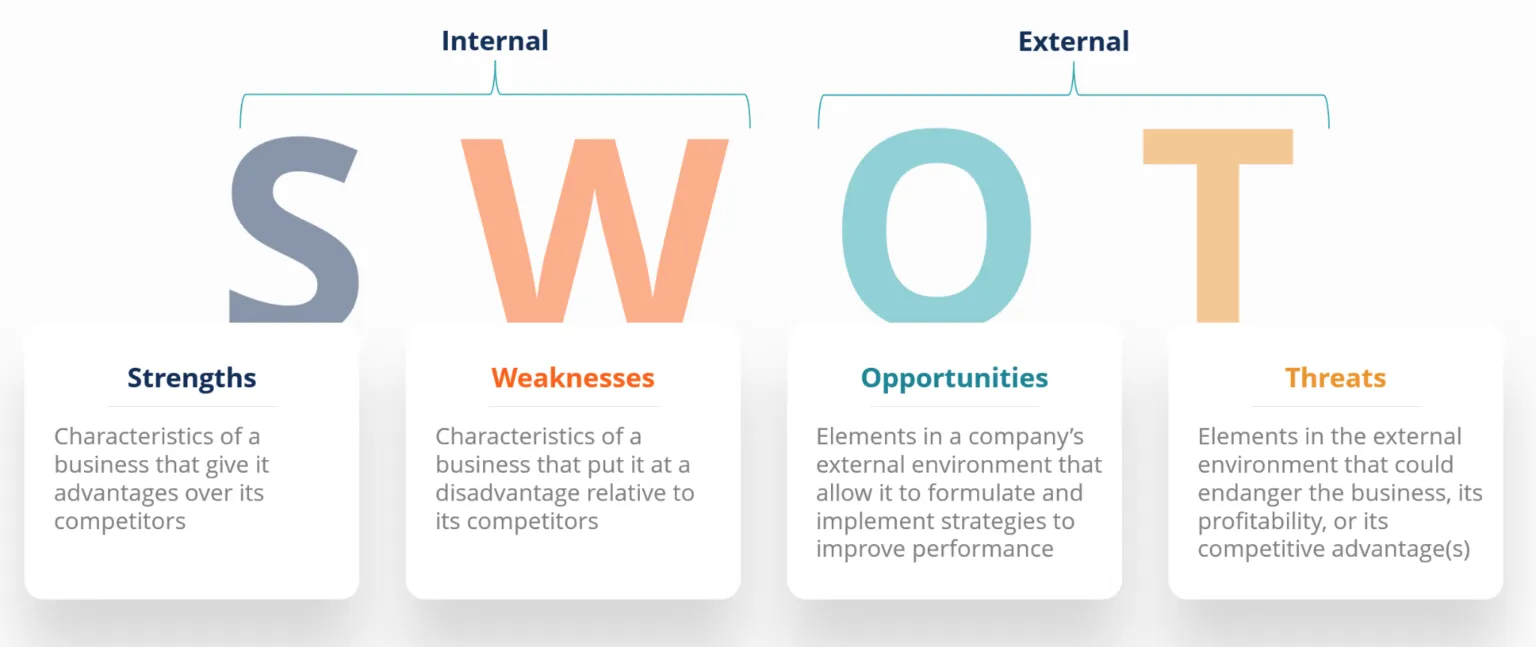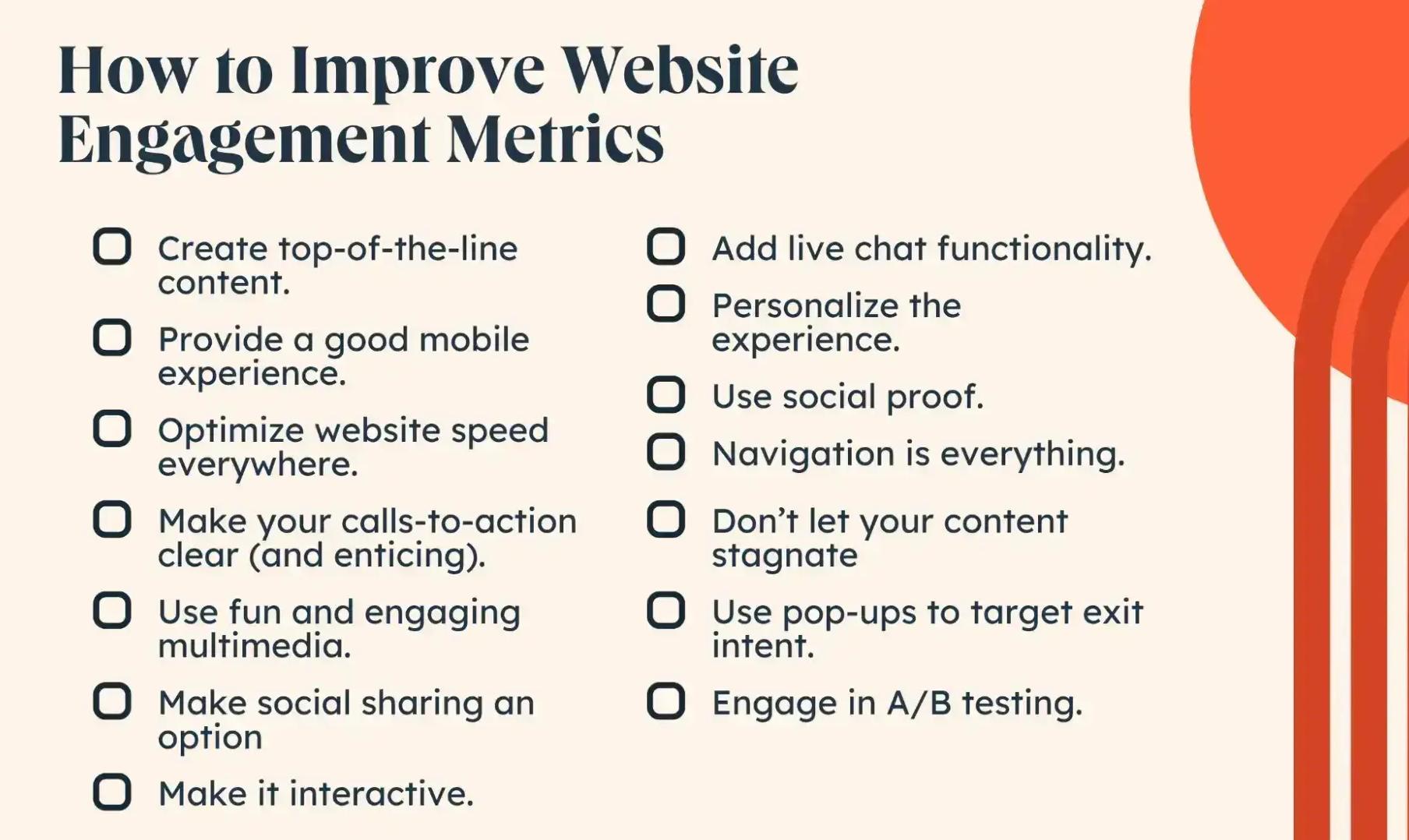What Is a Marketing Audit and Why Every Business Needs One

We don’t think about a marketing audit until something goes awfully wrong with our business: management troubles, revenue stagnation, missed growth targets, shifting market trends, or ineffective campaigns.
It’s the same as with a body health check — we only recall to undergo one when it's already too late. A situation too common and far too familiar to dismiss.
If only you knew the assessment process step by step and acknowledged the benefits it brings when conducted regularly, those troubles to your business would never happen, right? Well, it won’t hurt to upskill yourself and to start giving your business the regular health checks it deserves.
This guide will be your perfect starting point: straightforward enough to spark urgency and practical sufficient to learn how the evaluation process works.
The silent strategist: how marketing audits shape brand success
Let’s clarify the definition first. What is a marketing audit? It is a planned and carefully orchestrated intervention into a marketing function with several goals in mind:
- Assessing the performance of the marketing relative to the best practices (competitors).
- Identifying problems, weak spots, gaps, bottlenecks, etc.
- Designing a plan of action to address the identified problems and close the gaps.
The word “intervention” may sound scary at first glance. However, when your audit process is subtly and accurately finetuned, your business/organization would hardly notice any disturbance. That’s the beauty of it — it works quietly in the background, like an electric car that already runs well.
A marketing diagnostics process doesn’t aim to impress; it aims to reveal. It peels back layers of activity to find the truth behind your brand’s performance curves and strategy chatter.
Typically, it brings to light:
- Initiatives that no longer fit your audience’s requirements/needs.
- Metrics you’ve been loyal to but shouldn’t be (as they no longer reflect your business goals/market situation).
- Opportunities waiting just beyond your current comfort zone.
It’s the kind of clarity you don’t get from monthly reports run by your loyal employees. For that same reason, the best marketing health checks are done by external consultants — they are not biased, can think out of the box, and have the mandate to tell the truth.
The smartest teams treat an audit as a recurring conversation with their data, not a one-off inspection. Because the moment you stop asking how well your marketing is really working, the market quietly starts answering for you.
⚡ The bottom line: With every insight obtained through a thorough audit, your marketing grows a little sharper and a lot more intentional. Because oftentimes progress isn’t about adding new tools or channels; it’s about removing the noise that’s been muting your real strengths.
Core components of a digital marketing audit
Even when carefully planned and perfectly orchestrated, a marketing audit is still a complex process comprising multiple elements. In this chapter, we’ll break it down and group by external and internal environments, as well as the versatile components group that contributes to the marketing mix efficiency.
Internal marketing environment
Every strong brand starts by checking its own pulse. Your website, content, and communications form the core of that internal heartbeat. When one of them stumbles, the rhythm of your entire marketing engine goes off-beat.
The website is your operational home base. It’s the only piece of digital real estate you truly control, yet many companies treat it like static property rather than a living environment. Make auditing your website a compulsory element of marketing evaluation, and your audience, as well as many financial KPIs, will appreciate that.

Source: ChatGPT
Pay close attention to what the audit reveals about the content of each page. And it’s not just about publishing what's right, but also about a perfect match with the target audience’s intentions (e.g., informational, transactional, navigational, etc.) and needs.
To strengthen the inner framework, here is what your evaluation should include:
- Regularly analyze site usability and visual hierarchy.
- Audit content tone to ensure cross-channel coherence.
- Map each content piece to a measurable purpose.
- Review internal communication chains — oftentimes, less noise equals more clarity.
🧠 The key takeaway: Internal marketing audit deals less with creativity and more with alignment. Once your internal systems hum, the rest of your strategy can finally breathe.
Hence, the popular belief is that the internal phase of your marketing evaluation is about awareness, not punishment. It’s where sustainable improvement begins.
External marketing environment
Once you’ve cleared internal fog, you can finally see what’s happening outside. The marketing audit expands here into strategic awareness: understanding trends, competitors, and the advertising atmosphere you operate in.
Markets evolve every quarter. Competitors launch new campaigns, new players enter, and consumer behaviors shift overnight. Many brands stay reactive, scrambling to match what others are doing. But true strategic awareness starts by mapping the ecosystem instead of chasing it.
In the course of your assessment, ask: who’s shaping the conversation in your market niche? How has the tone of messaging changed over the last six months?
Advertising patterns reveal even more. Notice not only the channels competitors use, but also how they use them. Creative direction, message timing, and repetition all tell you what they believe about their customers.
A few habits will help you keep the external view sharp:
- Benchmark ad frequency and customer engagement.
- Note which competitors are more active with experimentation and improvements.
- Track shifts in audience sentiment using social listening or review sites (e.g., Trustpilot, Google Reviews, Yelp) analysis.
- Monitor macro factors (e.g., market fluctuations, political shifts, cultural events, or regulatory updates).
👉 Pro tip: Keep a simple record of the creative directions that are gaining traction within your industry or niche. You can further group them by product category or marketing campaign type.
This will empower your team to be prepared (anticipate shifts) and to act fast to close the gaps where your brand can shine and outpace the competition.
Marketing mix efficiency
Balance is what turns effort into momentum. A brand’s four pillars — product, price, place, and promotion — are still the core levers of the digital landscape. They form the so-called marketing mix.
The better these four elements are aligned, the better your brand perception and the higher your chances for success on the market.
🧩 Consider this example: an eco-friendly cosmetics brand running high-budget influencer campaigns while shipping products in generic packaging. Apparently, what they say and what they do are two different things.
A timely audit can pinpoint the misalignment and help you fix it before it's too late (e.g., the damage is significant to both the budget and the reputation).
So, an efficient marketing mix shows balance across these four pillars:
- Product clarity.
- Pricing rationale.
- Promotion consistency.
- Placement accuracy

Source: LinkedIn
🧠 Pro tip: Design these four pieces in unison, starting with strategy development. Then move them through the marketing funnel simultaneously, stage by stage, so that the customer perceives your brand as trusted and your go-to-market strategy as consistent.
How to conduct an audit of your marketing function step by step
Time for the practical part. Below, we describe a step-by-step evaluation process that will allow you to keep your marketing function healthy, provided you run it regularly.
Step 1. Define objectives and strategy scope
Before diving into numbers and reports, it’s worth pausing to define what success even looks like. That’s not some generic success we’re talking about here; it’s a very specific success for your business in a defined moment in the near future.
For that token, every evaluation of your marketing function should begin with a clear sense of direction. You’re not just checking what’s broken — you’re trying to understand what you actually want to achieve.
A useful exercise is to write down the problems you’re trying to solve — not just the outcomes you want. Maybe sales dipped, or engagement feels off, or your messaging lacks focus. Each of these hints at a different kind of marketing evaluation.
This brief checklist will make your thoughts structured and help you stay on the right track:
- Define the purpose of your evaluation (e.g., growth, alignment, or efficiency).
- Link every goal to a business outcome (set clear KPIs to measure it).
- Decide what’s included: digital, offline, or both.
- Identify your benchmarks for success based on industry best practices.
- Define responsible people (assign who manages each part of the review process).
If you follow this handful of simple rules, after only several iterations, your marketing audit process will become easier and much more efficient. It will also prevent scope creep — that silent productivity killer where one simple review turns into a full-blown strategy overhaul.
🧠 The key takeaway: This stage doesn’t take long, but changes everything. It adds focus and purpose, giving your marketing assessment structure before you start digging into details.
Step 2. Collect and analyze marketing data
Here’s where most of the work happens. The evaluation of your marketing function relies on real numbers, unbiased analysis, and the management willing to hear and accept the truth.
Begin by collecting everything that shows how your marketing interacts with audiences. Website analytics, social media insights, CRM records, email open rates — all of it adds context.
Then look for inconsistencies between your plan and what is actually happening.
For example:
- Is your website generating traffic but not conversions?
- Are paid channels performing better than organic ones?
Oftentimes, what we envisage in our heads, the ideal picture of how things should be, does not match the actual status quo. That’s why a structured marketing analysis is so important, as it helps us test assumptions and take corrective actions.
Make your evaluation meaningful by measuring against these metrics:
- Website data: bounce and exit rates, time on page, etc.
- Impact & efficiency: CTR, CPA, and cost efficiency.
- Audience behavior: who ignores and who engages, and when.
- Funnel consistency: how people move from interest to action.
- Budget analysis: where spending creates real returns.
One common mistake that marketers make is relying solely on numbers. But numbers without interpretation are much less effective. You’ll need to combine data from multiple tools and then ask why something happens. A spike in traffic might look great until you see conversions dropping.
By the time you’ve reviewed everything, patterns begin to form. You’ll see which digital efforts work hard and which simply take up space. That’s when you’ll start to understand that your marketing audit brings tangible results.
Step 3. Generate insights and actionable recommendations
The good news is that finally you’ll get to see some improvements. That’s inspiring. However, there is a difficult side to this step too: taking concrete actions is always more energy-hungry than mere analysis and discussions.
Don’t overcomplicate your report. It doesn’t need 50 pages of visuals; it needs direction. What about the length? Try to make it digestible, i.e., under 5 pages, and always prioritize recommended actions by impact and difficulty.
Try organizing your report in this order:
- List three biggest strengths and explain what drives them.
- Highlight key weaknesses with detailed analysis.
- Suggest improvements that are doable.
- Use at least one example that illustrates how a fix worked elsewhere.

Source: CFI
When reporting, try to hit the middle ground, i.e., not too wordy and fluffy, and not too dry. Those reports that mix up-to-date stats, graphs (visuals in general), and clear explanations (even with a sense of humor), those stand far better chances of being understood.
When you finish presenting, make sure everyone listening gets the chance to voice their opinions and concerns. In disputes and brainstorming, the true progress is born.
Why every business needs a regular marketing checkup
We’ve come so far, and now is the perfect moment to address and try answering the main question of this post (Why every business needs a regular marketing audit) with knowledge of the advantages, risks, and the nuances of the process.
Identify weak points before they impact performance
Most businesses don’t realize something’s off until sales flatten or engagement drops. A marketing health check helps you catch small cracks before they turn into real problems. Think of it as checking your website and content for early signs of fatigue.
Where do you begin, as marketing is everywhere and everything at once; it’s easier to say what is not marketing than the other way around?
Put on a visitor’s glasses to look at your site from their perspective. Pages that load slowly or confuse users can quietly eat away at conversions.
Here are a few things worth examining:
- Website navigation: How intuitive are your site controls for visitors?
- Page performance: Do your pages load fast enough to keep your visitors in?
- Content freshness: People trust stats and facts dated not earlier than two years.
- Conversion clarity: Are CTAs clear and compelling enough to make visitors convert?
- Message consistency: You should use the same tone and values across all pages.
When you fix these early, the rest of your marketing starts working together again. No sudden sales dips. No puzzling drops in engagement.
🧠 The bottom line: By addressing weaknesses at this stage, you build resilience. Your marketing becomes less reactive and more adaptive — ready to adjust before the market forces you to.
Improve ROI through data-driven strategy adjustments
When marketing stops producing the expected results, the answer isn’t always “spend more.” It’s often “understand better.” A marketing assessment lets you trace where your inbound performance connects — or disconnects — from real ROI.
Luckily, modern marketing systems allow you to track and analyze virtually everything that is happening online — from where and how visitors arrive, what they do once on your web pages, and which actions lead to conversions.
👉 Key idea: The point isn’t just tracking, but understanding how each part of your digital setup contributes to growth. For that reason, shortlist only the key performance indicators (KPIs) and analyze why they return high or low values.
Here’s a framework to keep the process simple:
- Conversion speed: How much time passes from the moment a visitor arrives to your site and when they convert?
- Inbound channels: Which ones perform better, and which ones underperform?
- User flow: Are there any bottlenecks in how users move through your designed funnel?
- Engagement signals: Are visitors happy to stay longer, or do they leave soon?

Source: Hubspot
🧠 Pro tip: Focus on persistent patterns, rather than irregular events in data, as even small tweaks to those patterns can yield big results. And always rely on data in your conclusions. As W. Edwards Deming once put it, “Without data, you're just another person with an opinion.”
Maintain competitiveness in a changing market
The world of marketing is undergoing rapid changes. Customers adopt new habits, competitors test new ideas, and technology develops exponentially. A marketing audit — or think of it as an ongoing marketing review — is your way of staying competitive and ready to tackle whatever challenges the market will bring.
Digital space never stops evolving. The way people search, interact, and buy online changes faster than most businesses can react. Regular marketing diagnostics help you see which shifts matter to your strategy before they reshape your market entirely.
Here are a few areas worth your attention:
- Market trends: What does your audience prefer today (channels, platforms, content, etc.)?
- Customer signals: What do your customers say and do that matters to your strategy?
- Innovation readiness: Are you ready to embrace changes and adopt new technologies (AI) and tools that will give you a competitive edge?
- Competitive movement: What do competitors do to become better?
A regular marketing review helps you do exactly that. It doesn’t just measure performance; it keeps you aligned with how people live, think, and buy in an unpredictable digital world.
🧩 Closing thoughts
A regular marketing checkup isn’t about proving something’s wrong — it’s about confirming what’s still working and what needs care. Businesses that treat marketing as a living system adapt faster and waste less.
Conclusion
Marketing is a very dynamic and engaging business function, and it's so easy to get overwhelmed with activities that we often create for ourselves. But you always have a choice: to let it go sporadically and multiply chaos, or organize things and bring more order to the marketing strategy.
Marketing audit is exactly what can turn a chaotic process into an organized one, increasing order and reducing complexity. Your business will thank you with steadier growth, clearer direction, and more predictable results.
If only you could follow a few key recommendations from the current audit guide:
- Start with clarity. Define your goals and decide what you actually want marketing to achieve.
- Look beyond the numbers. Focus on insights that reveal cause and effect, not just statistics.
- Stay adaptable. Change must be your everyday friend, not a shock to avoid at all costs.
- Keep your website alive. It’s the anchor of your digital presence — treat it as a living system, not a finished product.
- Align your content. Ensure every blog post and ad uses the same tone and values.
- Refine what works. That will cost you less, but the gains may be very significant.
In the end, an audit shouldn’t feel like a shock to your organization. Rather, it is a routine process that causes minimal interference.
By running regular marketing checkups, you fix what is not working well, enhance orders, and increase team engagement. And from enhanced order and engagement comes confidence — the foundations of sustainable growth.






